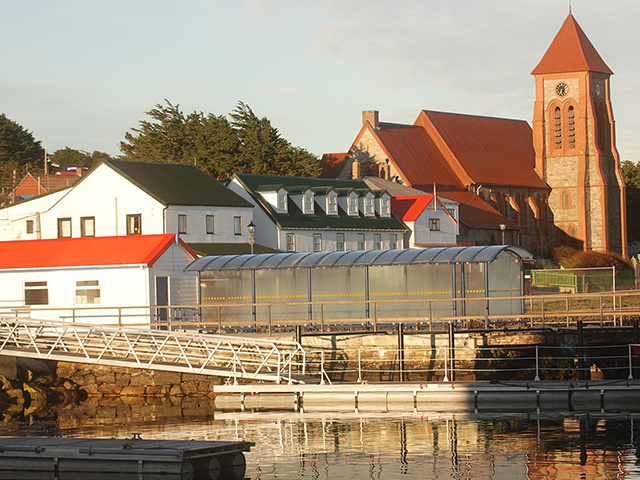
The Falkland Islands face an influx of people that could see the South Atlantic archipelago’s population shoot past 4,000 from the current 3,000 level by the mid to late 2020s, should the development of both oil and gas resources really take off.
Even based on the current first oilfield development . . . Premier-operated Sea Lion . . . analysts commissioned by the Falkland Islands Government expect a short-term rise to the current population of 500-600 people, settling to a longer-term rise of around 250.
Preliminary short-term findings by Regeneris point to:
- Pressure on health, immigration and police services
- Need for 50-60 public services jobs and perhaps more
- Strong pressure on wage rates for FIG staff: manual, administration and professional
- Pressure on FIG’s capacity to manage and plan everything
Though such pressures would ease longer term as the Falklands population adjusts, challenges would prevail. It is thought, however, that Stanley could comfortably absorb the impacts, which could include the need for 100 or so new houses.
The major pinch point is considered to be the port. For now, all oil-related traffic must use the FIPASS pier at Stanley. However, FIG is proposing a brand-new dedicated facility at Port William, which could cost around £150million or so and might be ready as early as 2017. Such a project would have significant jobs implications in its own right.
If Sea Lion comes onstream in 2017 as predicted, the development is expected to have a dramatic impact on FIG revenues. The prediction is island revenues could rocket to £150million per annum averaged out over a 30-year period.
The islands’ gross domestic product is set to rocket from around £140million today to north of £1billion by 2018, though this is highly dependent on oil prices.
Should the current hunt for oil and gas uncover further viable discoveries, the impacts become greater.
Based on three oilfields, with Sea Lion onstream in 2017, the second in production by around 2021 and the third in hand, the numbers work out approximately as follows:
- A peak of about 1,200 jobs
- A steady state increase of 500-600 jobs
- The population would rise about 800
- There would be a need for around 300 extra homes
There is a strong possibility that there are two commercial finds. The Darwin discovery by Borders & Southern Energy is expected to pass the viability threshold once appraisal drilling has been carried out. This may start during H2 next year, otherwise the campaign will be conducted in 2015.
And should a gas discovery sufficiently large to enable development based on a floating liquefied natural gas vessel (FLNG) be made and added to the oilfield tally the numbers become:
- Again a peak of around 1,200 jobs
- A steady state increase of around 700-800
- Population rising by 1,200
- A need for extra 400 houses
However, should the decision be made in favour of building an onshore LNG plant then the numbers change even more dramatically. This is because of the heavy labour requirement during construction. An FLNG vessel would invariably be built in a south-east Asian yard.
- Peak of around nearly 4,000 jobs
- Steady state jobs around 1,200
- Steady state population rising by 1,600
- Opportunity for an alternative economic hub to emerge rather than concentrating everything into Stanley.
The foregoing has massive implications for how the FIG manages the way ahead, not least immigration and infrastructure policies.
Footnote: Energy was a guest in the Falklands late last year and reported on that visit in December. Our coverage was interpreted by at least some among the FIG as being critical, which is not the case.
This small administration is obliged to make huge decisions. It won’t get everything right and relationships with the oil industry will not always be smooth. That is the nature of the beast. But so far, progress has been rather better than the UK’s handling of the North Sea opportunity.